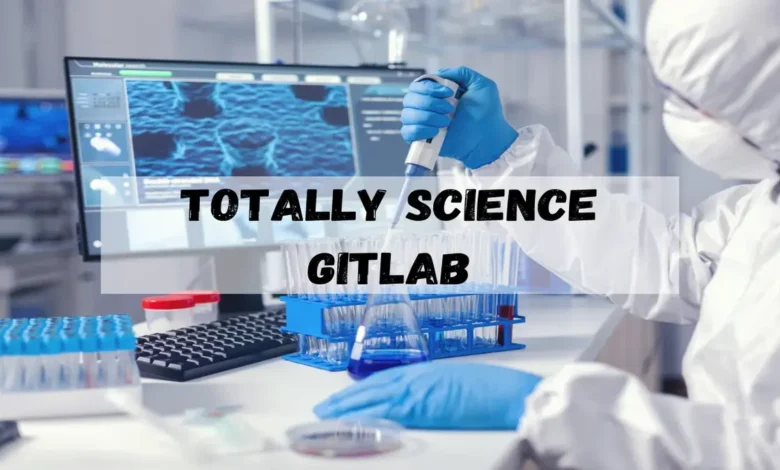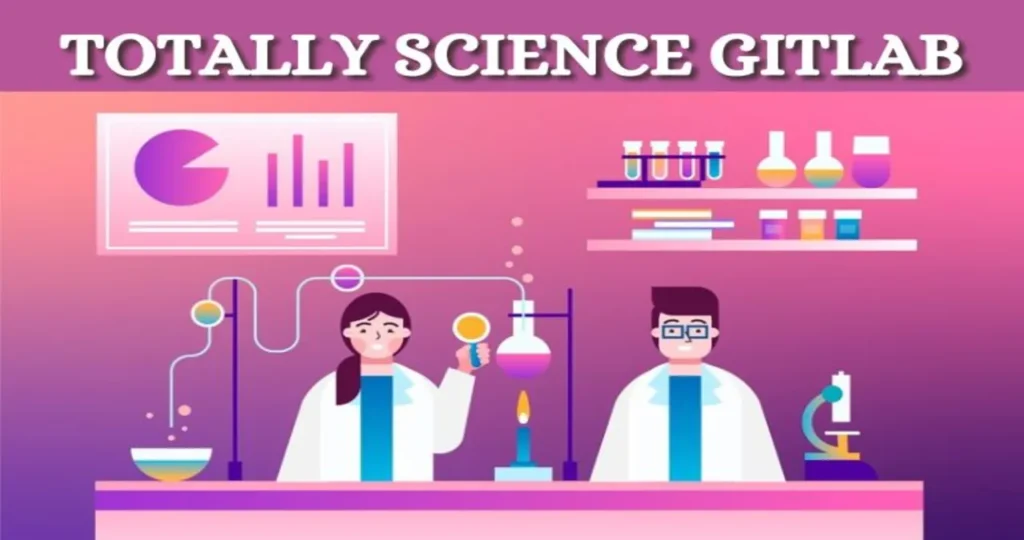Totally Science GitLab: 1A Deep Dive Into Collaborative Development and Science Integration

GitLab has quickly become one of the leading tools in software development and project management. But how does it relate to science, especially in collaborative research, data analysis, and innovation? In this article, we will explore the powerful integration of GitLab into scientific work, shedding light on its vast potential for making collaborative efforts easier, faster, and more efficient in the scientific community. We’ll dive into what “Totally Science GitLab” really means, why it’s becoming a key tool in scientific research, and how it can be leveraged for both simple and complex science-driven projects.
What is GitLab, and Why Does It Matter in Science?
GitLab science gitlab is an open-source platform for software development and DevOps lifecycle management. Essentially, it provides a suite of tools that allows teams to plan, develop, test, and deploy software projects in a seamless, integrated environment. However, what makes GitLab even more powerful is its versatility—it’s not just for developers anymore. Researchers and scientists from various fields, including bioinformatics, physics, and even social sciences, are adopting GitLab to streamline workflows, facilitate collaboration, and ensure better version control.
For scientists, GitLab offers a robust platform to collaborate on research projects, store and manage large datasets, and automate repetitive tasks that can consume significant time and energy. The tool’s powerful version control system ensures that every change, every update, and every addition to the project is carefully documented, creating a transparent, auditable history of the research process. This is especially critical in science, where accuracy, repeatability, and accountability are crucial.
Moreover, GitLab’s integration with CI/CD (Continuous Integration and Continuous Delivery) tools allows researchers to automate aspects of their workflows, like running simulations, analyzing data, or even deploying models for further analysis. The possibilities are virtually endless when you combine the capabilities of GitLab with the needs of a science-based workflow.

The Key Features of GitLab That Benefit Scientists
Collaborative Coding and Version Control
Version control is one of the most critical features of GitLab for researchers. It’s not just about keeping track of code; it’s about preserving the integrity of the scientific process. With GitLab’s version control, scientists can track every change made to their code, documents, and datasets, ensuring that the original work can always be retrieved or reviewed.
This feature becomes particularly helpful when working on collaborative research projects. Often, researchers from different locations or organizations are involved in a single study, and each might be responsible for writing portions of the code or analyzing different subsets of the data. GitLab allows all contributors to seamlessly track changes in real time. For scientific teams, this means there is no more confusion about which version of a script or analysis is the most recent or correct.
In addition to this, GitLab offers easy branching and merging of code, which is invaluable when working on different versions or testing new ideas without altering the core project. This helps prevent errors and makes it easier to experiment with new algorithms or methodologies without the risk of losing earlier work.
Issue Tracking and Project Management
Managing a research project involves many moving parts—research papers, data collection, analysis, and sometimes even collaboration across multiple teams. GitLab’s integrated issue-tracking system provides an effective way to keep everything organized. Researchers can create “issues” to represent tasks, experiments, or problems that need to be solved. These issues can be assigned to different team members, prioritized, and tracked throughout the project.
For example, a research project may involve coding scripts, preparing datasets, and running complex analyses. Each of these tasks can be broken down into individual issues, allowing team members to focus on specific aspects of the project while keeping track of the overall progress. This transparent approach to project management helps ensure deadlines are met and keeps everyone on the same page.
Moreover, GitLab integrates with other tools like Slack and email, which can be used to provide updates about specific issues. This makes communication much smoother and keeps team members informed without the need for constant meetings or status updates.
Continuous Integration for Faster Results
In scientific work, especially in fields like machine learning or computational biology, automation is a game changer. GitLab’s Continuous Integration (CI) system allows researchers to automatically run tests, simulations, or computations every time a change is made to the project. Instead of manually running these tasks each time an update is made, CI tools can automatically do this for you, saving countless hours of work and reducing the risk of human error.
For example, in computational biology, researchers might work with large datasets, running complex analyses to identify patterns or insights. With GitLab’s CI/CD pipelines, these analyses can be automated, so the system automatically starts a series of tests as soon as new data is added or an update to the script is made. This reduces the time spent on mundane tasks and allows researchers to focus on more critical aspects of their work, such as interpretation and reporting.
Additionally, CI tools help identify errors early in the development process, which can be particularly helpful in scientific programming. A bug or issue that might go unnoticed until later can be caught right when it happens, reducing the chances of costly mistakes.
Data Security and Integrity
Data integrity is non-negotiable in scientific research. GitLab’s security features ensure that your data is safe and protected. Whether it’s through encrypted repositories or access controls, GitLab provides scientists with a secure environment to store and share data. Furthermore, GitLab ensures that all versions of the project are available, and no data is ever lost, even in the case of a failure or security breach.
The platform allows administrators to set permissions, ensuring that only the right people have access to sensitive information. For example, if a project involves confidential medical data, GitLab can be configured to ensure that only authorized individuals can access or modify the data, which helps maintain compliance with various data protection laws like GDPR.
Moreover, GitLab’s backup and recovery system ensures that in the event of system failure, data is not lost. This gives researchers peace of mind, knowing that the hard work they put into their research is secure, no matter what happens.
Leveraging GitLab for Data Science
The Growing Role of Data Science in Research
Data science is an integral part of modern scientific research. From data collection and processing to analysis and visualization, data science methods help researchers uncover patterns, make predictions, and gain deeper insights. GitLab is an invaluable tool for data scientists, enabling them to efficiently manage their code, datasets, and collaboration efforts.
For data science teams, GitLab helps bridge the gap between coding and communication. It allows data scientists to collaborate with developers, researchers, and other stakeholders across a wide variety of disciplines. Whether it’s developing machine learning models, running complex simulations, or analyzing large datasets, GitLab provides a central platform where all aspects of a project can come together.
In data science projects, version control ensures that every analysis is reproducible, which is essential for validation and publication. GitLab not only helps manage code but also provides a means to track the different datasets and configurations that were used throughout the analysis, making it easier to reproduce results and validate findings. This is particularly important in the context of peer-reviewed research, where reproducibility is a cornerstone of scientific rigor.
Integrating Data Science Tools with GitLab
GitLab also allows seamless integration with popular data science tools, such as Jupyter Notebooks, RStudio, and Python libraries like pandas, NumPy, and TensorFlow. This integration allows scientists to combine the power of GitLab’s project management, issue tracking, and collaboration tools with the best data science platforms available. Whether it’s creating a Jupyter notebook for data exploration or using R for statistical analysis, GitLab makes it easy to manage these different aspects of data science under one roof.
For example, when running an analysis on GitLab, data scientists can push their code to the repository, allowing for version tracking and team collaboration. Simultaneously, they can use GitLab’s CI/CD pipelines to automatically run tests or analyses and even deploy machine learning models to production environments. This seamless integration accelerates the research process and ensures everything is tracked and organized.
Moreover, GitLab’s powerful containerization features (via Docker) make it easy for data scientists to share environments with their colleagues. Instead of worrying about dependencies or compatibility issues, they can package their entire analysis, including the code, libraries, and data, into a container that can be shared and reproduced by anyone involved in the project.
Real-Life Examples of Totally Science GitLab
Collaboration in Bioinformatics
One of the most exciting applications of GitLab in science is within the bioinformatics community. In bioinformatics, researchers work with vast amounts of genetic data, trying to identify patterns or sequences that can lead to medical breakthroughs. GitLab has proven to be an excellent tool for bioinformatics teams, providing a way to collaboratively analyze data, build pipelines, and document findings.
For instance, a bioinformatics team working on a genetic sequencing project can use GitLab’s version control to manage their code, track data changes, and share results. GitLab CI/CD pipelines can be used to automate the data processing steps, ensuring that the team can quickly analyze large datasets without spending time on manual tasks. The collaborative environment also ensures that all members of the team, regardless of their physical location, can contribute and access the most up-to-date information.
Additionally, GitLab’s integration with popular bioinformatics tools such as Galaxy, Biopython, and R allows teams to bring these tools directly into the GitLab environment, creating a seamless workflow that eliminates the need for switching between multiple platforms.
Machine Learning and AI Research
Machine learning and AI research is another area where GitLab is becoming a powerful tool. Researchers in this field often work on large-scale projects involving datasets, algorithms, and model training, which require close collaboration and constant iteration. GitLab’s ability to manage complex workflows and automate tasks makes it ideal for these types of projects.
For example, a team working on a machine-learning